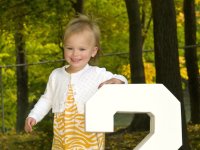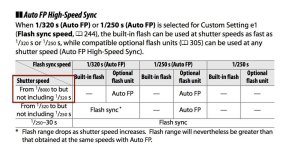?....I started trying to research this but I'm just getting a little bit confused.I understand the need for a flash and I understand the desire for having a flash off camera however the d3100 and d5000 don't have flash commander capability so I'm looking at some of the aftermarket flash commanders like youngwow (spelled wrong) make and I'm just trying to determine will those allow me to get a flash sync rate above 1/ 250th of a second and do I really need to have anything faster than that for creating backlit strobe effect.also how is sync different from just saying remote flash (dummified).apparently nikon SB 800 and SB 900 will allow me to add remote flash commander capability but if it won't allow me to achieve a flash faster than the 1/250th of a second it really doesn't help me I think....
Any speedlight should easily do the 1/200 second maximum sync speed of the camera. Not an issue.
Except, it is possible that (if used) some radio triggers can slow it down just a bit. Not likely, but not impossible in some cases.
On the camera hot shoe, triggering would be no issue.
To trigger a remote flash, the choices are:
1. Radio trigger, transmitter on hot shoe and receiver on the remote flash. This is most often manual flash mode. For example, the Yongnuo RF-603 trigger (you need two, one is transmitter, one is receiver).
2. Optical slave trigger (including $10 Ebay types), which trigger the Manual flash in sync from seeing the Manual flash of any other flash. So you could have one radio receiver, and two optical slave triggers, etc. Or the camera internal flash in Manual flash mode could be the trigger.
3. PC sync cord, if flash and camera have provision for it. To one flash, and the others could be optical slaves.
4. Nikon commander, which lower cost Nikon cameras do not have. You could add one, but these cameras still would have no FV Lock feature, which is rather important.
More at
How to trigger speedlights Off camera
I question that you need faster sync speed. I would ask Why? That purpose needs elaboration.
Camera have worked like this forever, and very few of us ever need more.

The speed light is extremely fast (called speedlight). Speed is faster if not at maximum power. All studio portraits in history are taken at a speed not exceeding maximum sync speed (1/200 second for your camera models - it used to be 1/60 second not that long ago). The flash is greatly faster than that, the flash is what stops motion, so it will not be an issue (in any reasonable situation).
See
Capability of flash units for high speed photography about example of stopping a milk drop that has fallen two feet (speed 11.5 feet per second) with a
shutter speed approximately 1.5 seconds. The speedlight stops the motion...
If you want to know more about the meaning of the maximum shutter sync speed,
see
Maximum Shutter Sync Speed for Flash - Four Flash Photography Basics we must know
Your cameras do not have Auto FP HSS (and the Yongnuo model likely does not either), but it is described at
Auto FP and HSS

